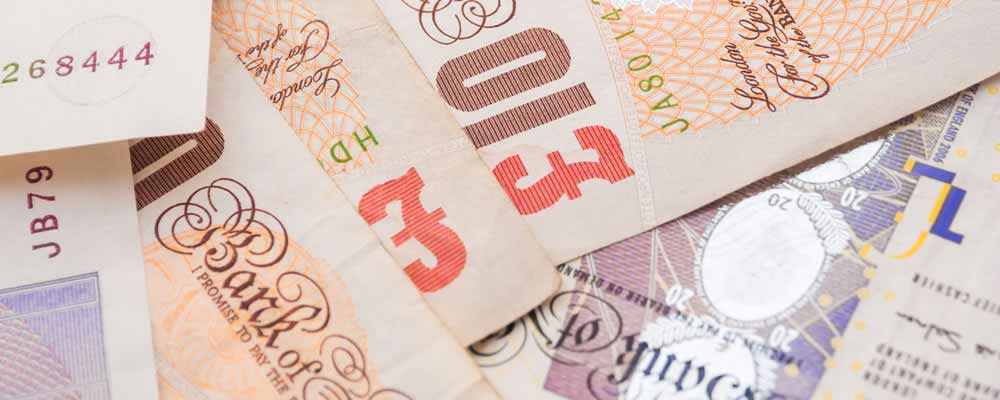The potential threat of a hard Brexit prompted some heavy selling on Pound exchange rates this week, although sentiment stabilised somewhat in response to some more confident comments from Bank of England (BoE) policymakers.
- Pound exchange rates climbed away from multi-year lows – Confidence boosted by lower odds of imminent BoE rate cut
- Eurozone retail sales fell short of forecast – Euro trended lower as outlook of currency union remained muted
- Weaker ADP Employment Change dented US Dollar demand – Fed rate hike speculation diminished on suggestion of weaker labour market
- Widened UK trade deficit forecast to weigh on GBP EUR exchange rate – Brexit concerns likely to persist
Robust German Factory Orders Boost Euro (EUR) Demand
German factory orders strongly bettered expectations in August, clocking in at 2.1% rather than the forecast growth of 1.6%. This offered a fresh sign that the Eurozone’s powerhouse economy is recovering from recent uncertainty and market volatility, offering encouragement to investors. As a result the GBP EUR exchange rate was trending lower in the region of 1.1368 at the start of Thursday’s European session.
(Previously updated at 17:00 05/10/16)
Demand for the US Dollar weakened, meanwhile, as some disappointing employment data dented hopes of a 2016 Federal Reserve interest rate hike.
GBP Exchange Rates Recovered Ground after Hawkish BoE Commentary
Although September’s UK PMIs all bettered expectations this failed to offer the Pound (GBP) any particular support. While the domestic economy appears to have continued recovering in the wake of the post-referendum shock investors have remained preoccupied with the potential loss of the UK’s single market access. However, Sterling’s bearishness was tempered on Wednesday by the decreasing odds of the Bank of England (BoE) cutting interest rates again in the near term. Deputy Governor Ben Broadbent took a slightly more hawkish tone, making note of the economy’s greater-than-expected resilience in the wake of the Brexit vote.
Even so, GBP exchange rates are expected to remain under pressure over the coming days. Forecasts point towards a widening of the trade deficit in August, something which would not bode overly well for the economic outlook. The UK’s wide trade deficit is considered a particular vulnerability ahead of the exit from the EU, with any negative shift in the balance of trade set to have a marked impact on the economy. Expectations are not overly positive for Friday’s manufacturing and industrial production figures either, which could see the Pound remain biased to the downside.
Disappointing Eurozone Retail Sales Boosted GBP EUR Exchange Rate
Confidence in the Euro (EUR) generally weakened in the wake of August’s Eurozone retail sales data, which proved weaker than expected. Clocking in at 0.6% rather than 1.5%, sales growth faltered on the year to suggest that consumer demand could be softening. This did not encourage demand for the single currency, particularly as worries over the Greek economy and future of Deutsche Bank persist. A further blow for the Euro came amidst rumours the European Commission President Donald Tusk may face difficulties securing a second term in office, a prospect that could cause considerable domestic turmoil.
Thursday’s German factory orders figures could offer a boost to the single currency, with orders predicted to have surged strongly from -0.7% to 1.6% on the year. This would offer a more robust picture of the Eurozone’s powerhouse economy, with any recovery in the manufacturing base likely to encourage investors. Any shortfall, on the other hand, could see the Pound to Euro (GBP EUR) exchange rate recover further ground.
US Dollar (USD) Volatility Forecast on Non-Farm Payrolls Report and Fed Rate Hike Odds
Despite the ISM Non-Manufacturing Composite strongly bettering forecast in September the US Dollar (USD) was unable to hold onto its bullish form towards the end of Wednesday’s European session. Although positive domestic data has seen increased odds of an imminent Federal Reserve interest rate being priced into the ‘Greenback’ this week investor optimism has begun to wane somewhat. In large part this has been due to a weaker-than-expected ADP Employment Change figure, which is commonly viewed as a precursor to the more crucial Non-Farm Payrolls report.
The US Dollar is expected to remain somewhat muted ahead of Friday’s employment data, with the likelihood of a 2016 Fed rate hike set to shift in response to the strength of the headline figure. If the labour market is found to have remained tight then policymakers will have more impetus to return to the monetary tightening cycle. As Derek Halpenny, European Head of GMR at MUFG, noted:
‘There is certainly a decent prospect of the markets considering [a November rate hike] if the data this week were to justify it. That could give the dollar a big lift.’
Nevertheless, if the headline figure fails to impress markets or the underlying fundamentals of the employment report point towards weakness then the Pound to US Dollar (GBP USD) exchange rate could climb further away from its recent 31-year low.
Current GBP, EUR, USD Exchange Rates
At the time of writing, the Pound to Euro (GBP EUR) exchange rate was trending higher around 1.1388, while the Pound to US Dollar (GBP USD) pairing was on an uptrend in the region of 1.2758.



